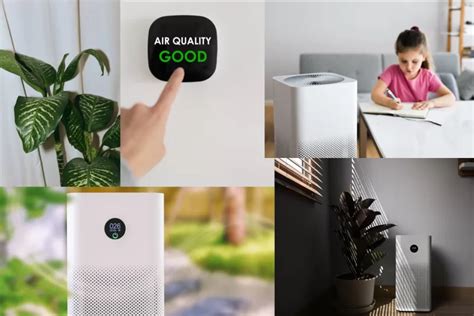Understanding Air Purifier Safety
Air purifiers are indispensable devices for maintaining indoor air quality. However, it’s crucial to ensure their safe operation to avoid potential hazards.

Common Safety Concerns
- Electrical hazards: These can occur due to improper installation, damaged cords, or overloads.
- Fire risk: Excessive heat generated by the purifier can ignite surrounding materials.
- Chemical hazards: Some purifiers release harmful ozone or other volatile organic compounds (VOCs).
- Inhalation hazards: Inappropriately used purifiers can emit unhealthy substances into the air.
Air Purifier Types and Safety Considerations
1. HEPA Filters
- Highly effective at removing pollutants, including allergens and bacteria.
- Replace filters regularly (every 6-12 months) to maintain optimal efficiency.
2. Ionic Purifiers
- Release negative ions to attract pollutants.
- Potential to create ozone and other harmful byproducts.
- Consider using only in well-ventilated areas.
3. UV-C Purifiers
- Utilize ultraviolet radiation to kill germs and bacteria.
- UV-C exposure can be hazardous to human skin and eyes.
- Ensure proper installation and usage to avoid exposure.
4. Activated Carbon Filters
- Absorb odors and VOCs.
- May require more frequent replacement than HEPA filters.
Best Practices for Safe Air Purifier Use
1. Proper Installation and Placement
- Follow manufacturer’s instructions for installation.
- Place the purifier away from flammable materials and sources of heat.
- Ensure the purifier has adequate air circulation.
2. Regular Maintenance and Inspection
- Replace filters regularly to maintain performance.
- Clean the purifier’s exterior with a damp cloth.
- Inspect the cords and plugs for damage.
3. Responsible Usage
- Avoid using purifiers continuously for extended periods.
- Use only in appropriately sized rooms.
- Keep the purifier out of reach of children and pets.
Air Purifiers vs. Air Ionizers: Safety Comparison
| Feature | Air Purifiers | Air Ionizers |
|---|---|---|
| Particle Removal | HEPA filters remove particles up to 0.3 microns | Limited particle removal capacity |
| Chemical Removal | Activated carbon filters remove odors and VOCs | May produce ozone |
| Health Effects | Generally safe when used properly | Potential ozone exposure |
| Fire Risk | Low | Higher due to electrical discharge |
| Maintenance | Regular filter replacement | Occasional cleaning |
Conclusion
Air purifiers offer significant benefits for indoor air quality. By adhering to the guidelines outlined above, users can maximize the benefits and minimize potential safety risks.
FAQs on Air Purifier Safety
1. How frequently should I replace my air purifier filters?
- Every 6-12 months, depending on usage and filter type.
2. Is it safe to use air purifiers in bedrooms?
- Yes, but avoid placing them directly next to your bed.
3. Can air purifiers cause headaches?
- Some purifiers release ozone, which can trigger headaches in sensitive individuals.
4. Are air purifiers effective against viruses?
- Some purifiers, such as HEPA filters, can remove viruses from the air.
5. How do I choose the right air purifier for my needs?
- Consider the room size, pollutant levels, and desired features.
6. What are the potential health benefits of using an air purifier?
- Reducing allergies, improving asthma symptoms, and promoting better sleep.
7. Can air purifiers be used in outdoor spaces?
- Some models are designed for indoor use only. Outdoor purifiers require specific features.
8. How often should I clean my air purifier?
- Clean the exterior regularly and inspect the cords periodically.





















